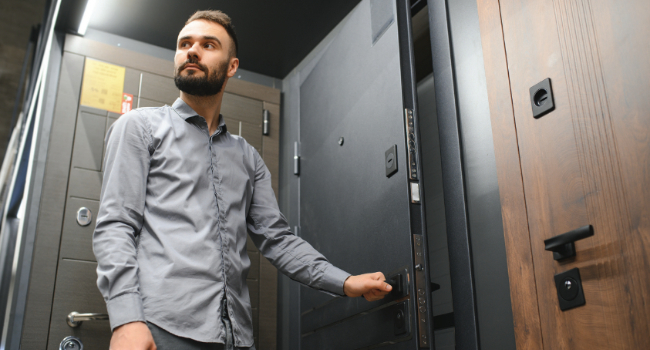
AI is now a surveillance reality, but deploying it at the edge, in the cloud or hybrid is an individual organizational decision
By Ramy Ayad Sr.
Ask most companies about their future technology plans and the answers will most likely include AI. Then ask how they plan to deploy it, and that is where the responses may start to vary. Every company has unique surveillance requirements that are based on market focus, scale, scope, risk tolerance, geographic area and, of course, budget. Those factors all play a role in deciding how to configure a surveillance system, and how to effectively implement technologies like AI.

By Karen Keating
Managing and maintaining locks and door hardware across a school district or university campus is a big responsibility. A building’s security needs to change over time as occupancy and use demands evolve, which can make it even more challenging. Knowing the basics of common door hardware, including locks, panic devices and door closers, can make a difference in daily operations and emergency situations.

By Laurent Villeneuve
Today, there is a strong shift from on-prem installations to cloud or hybrid-cloud deployments. As reported in the 2024 Genetec State of Physical Security report, 66% of end users said they will move to managing or storing more physical security in the cloud over the next two years.

New human rights and AI laws set for increased regulation in the security industry authored
By Fredrik Nilsson
The security industry spans the entire globe, with manufacturers, developers and suppliers on every continent (well, almost—sorry, Antarctica). That means when regulations pop up in one area, they often have a ripple effect that impacts the entire supply chain. Recent data privacy regulations like GDPR in Europe and CPRA in California made waves when they first went into effect, forcing businesses to change the way they approach data collection and storage to continue operating in those markets. Even highly specific regulations like the U.S.’s National Defense Authorization Act (NDAA) can have international reverberations – and this growing volume of legislation has continued to affect global supply chains in a variety of different ways.

By
Retail is still a more complex and dynamic security vertical in modern society. Inherent challenges with in-store and distribution center operations are primarily due to constantly shifting consumer buying trends. Retailers must show daily flexibility to keep workers, meet sales goals and attract customers while maintaining safe and efficient operations. Retail is an intricate web of interconnected elements.

By
A few years ago, all we saw in the news was the ‘great resignation.’ Now we have another ‘great’ to deal with. According to CBRE, 2023 was the start of the ‘great return’ as office workers returned to their normal offices after working from home. The data shows that two-thirds of all U.S office buildings were more than 90% leased as of Q2 2023.